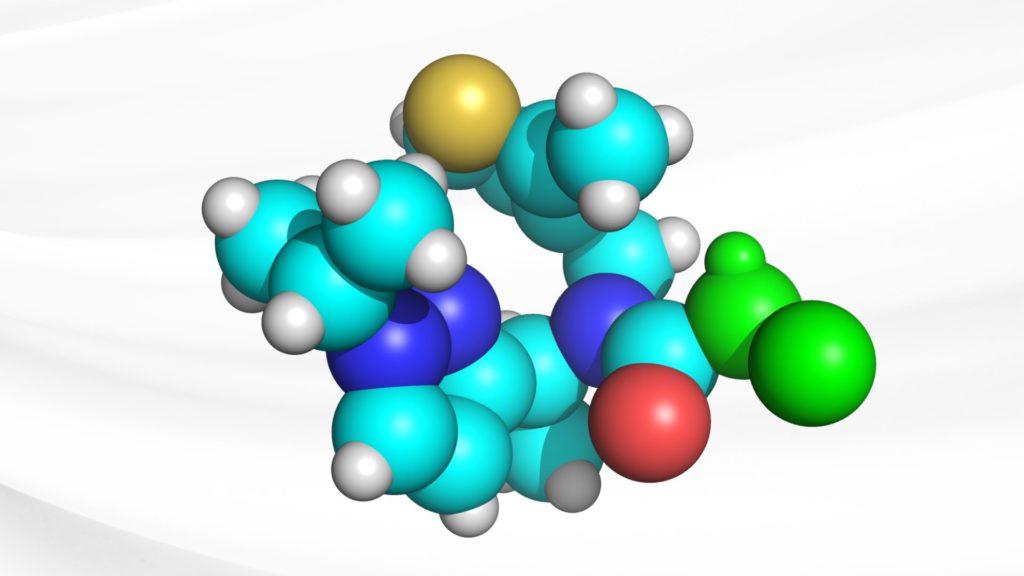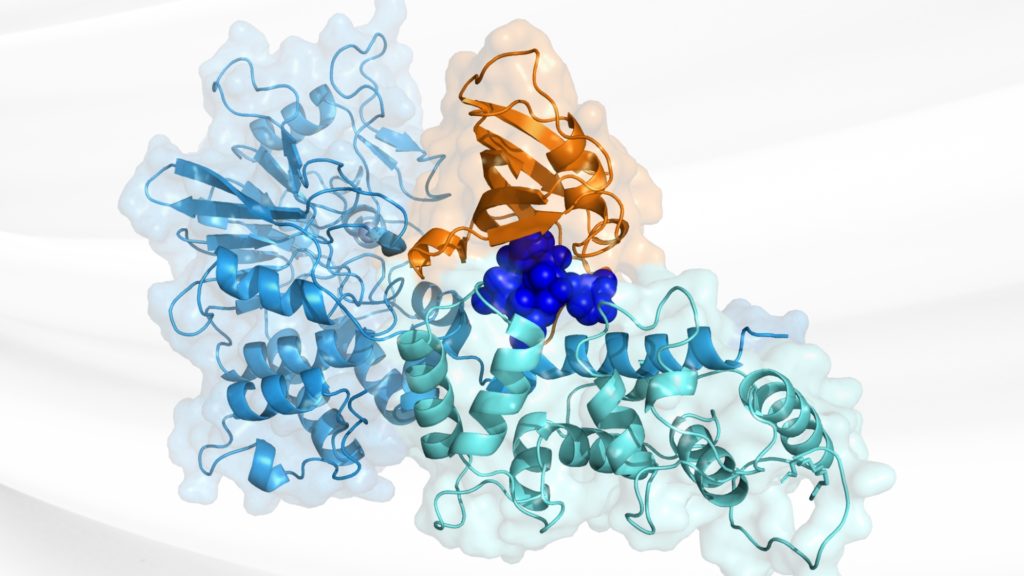


Hit identification and validation services for complex small molecule targets
Identifying high-quality, progressible hits for novel or complex targets is one of the central challenges in modern drug discovery. Many promising new targets with exceptional therapeutic potential lack obvious binding sites, demand unconventional modes of action, or require exceptional selectivity. Inversely, the IP space around well-established targets continues to become more crowded. At the same time, funding pressures mean that early chemical matter must withstand rigorous scientific and investor scrutiny.
We provide fully integrated hit identification and validation services for challenging small-molecule targets, delivering structurally enabled, biophysically validated starting points that are backed with comprehensive scientific evidence and ready for advancement into hit-to-lead and beyond.
Designing a hit discovery strategy
No two discovery programs are exactly the same, and this nuance should be reflected in the hit identification strategy. The right approach depends on your target, your objectives, and the challenges you anticipate downstream.
When designing a hit identification approach, there are several factors which strongly influence the screening route we ultimately recommend:
- Ligandability: Can the target protein (or desired binding site) easily bind a small molecule in a way that is therapeutically useful?
- Target complexity: Is your target flexible, disordered, or otherwise considered “difficult”?
- Mode of action: Do you know what you want the molecule to achieve (e.g., orthosteric inhibition, allosteric modulation, covalent binding)?
With the basics established, we will work closely with you to co-design a tailored hit identification and validation plan that balances innovation with practicality. Our team combines deep expertise in protein sciences, fragments, covalent chemistry, DNA-encoded libraries, structural biology and biophysics to select the most effective approach (or blend of approaches) for your target.
Our hit discovery approach
- Collaborative planning: We begin by understanding your target biology, mode of action, and therapeutic goals. Together, we define the screening modalities and validation criteria that are most viable and most likely to deliver on your objectives.
- Assay design and cascade build: From biochemical assays to advanced biophysical methods, we create the right cascade to identify and validate genuine hits while excluding artefacts.
- Integration with protein science, structural biology and biophysics: Unlike piecemeal approaches, we integrate hit identification with structural data from the start, enabling structure-enabled design–make–test–analyse (DMTA) cycles early in discovery.
- Focus on progression: Our aim isn’t just to find binders, but to generate hits with favourable properties, clear selectivity, and a path to patentability.
The result is a strategy that not only delivers validated chemical matter but also provides the rich data you need to make informed go/no-go decisions and build investor confidence.
Selecting a hit identification methodology
We specialise in tackling the hardest small-molecule discovery challenges. That means moving beyond “one-size-fits-all” approaches and instead identifying and applying the most effective tools to your target:
| Method | Overview | Strengths | Key Considerations | When to Use |
| Fragment-based Drug Discovery (FBDD) | Screens low molecular-weight (<300 Da) compounds and builds them up into higher affinity compounds | Best coverage of broad chemical space
High-quality starting points with favourable properties Can enable entry into patent free chemical space around targets, including well-profiled targets |
Requires structural biology integration
Hits often weak binders, requiring careful validation and chemistry to improve affinity |
Ideal for clean, drug-like starting points with the flexibility to identify new patentable opportunities for well-profiled or challenging targets. |
| Covalent Compound Screening | Uses libraries of covalently reactive compounds with diverse warheads to identify irreversible inhibitors | Can provide excellent starting points for “unligandable” targets
High potency, long duration of effect |
Risk of artefacts (non-specific conjugation, protein denaturation), requiring careful validation (orthogonal assays, MS) to confirm true hits | When targeting active sites with nucleophilic residues (e.g., cysteine)
When targeting proteins that are considered intractable, such as flat PPI surfaces, shallow grooves, or dynamic interfaces |
| DNA-encoded Library Screening | Screens billions of compounds tagged with DNA barcodes in a single experiment | Extremely deep exploration of a slice of chemical space
Cost-effective access to huge libraries High throughput |
Raw hits often require strict validation
Solubility/ADME liabilities possible Selectivity and progressibility need careful filtering |
Best when rapid access to large, diverse libraries is required, and integrated follow-up validation is in place |
In some cases, the smartest approach is not to choose just one method, but to run complementary strategies in parallel. For example, pairing a fragment screen with a DEL campaign allows you to explore both high-quality, minimal starting points with excellent diversity and larger molecules with a multitude of potential binding interactions simultaneously. Similarly, if a nucleophilic residue is available, a covalent screen can be layered alongside fragments to increase the chances of finding a foothold. Running methods in parallel maximizes hit discovery while reducing risk, ensuring you don’t miss progressible chemistry for a challenging target.
Learn more about these methods:
-
Fragment-Based Drug Discovery (FBDD)
Fragments are small, simple chemical building blocks with excellent solubility and physicochemical properties. Their power lies in being starting points with ideal drug-like qualities, from which more potent and selective compounds can be built.
- Best suited for: Targets with well-defined or unknown binding pockets, or when starting with a clean slate is key.
- Strengths:
- Efficiently probe the protein surface to find pockets, even cryptic ones.
- Ideal chemical properties to initiate a campaign.
- Structural tractability: Fragments pair seamlessly with structural biology.
- Patent flexibility: Starting small opens broad chemical space for optimization.
- Considerations: Fragments often have weak affinity initially, so success depends on rapid progression to structure-guided medicinal chemistry.
-
Covalent Compound Screening
Covalent approaches leverage reactive warheads to form irreversible (or slowly reversible) bonds with nucleophilic residues (e.g., cysteine) in or near the desired binding site. This can unlock otherwise “undruggable” targets.
- Best suited for: Challenging proteins or pockets with an appropriately positioned nucleophilic residue.
- Strengths:
- Creates strong, often irreversible binding.
- Excellent for flat, shallow or dynamic binding sites where reversible ligands struggle.
- Mass spectrometry and biophysical assays enable confident validation.
- Considerations: Requires careful assay design to avoid non-specific reactivity or artefactual protein modification.
-
DNA-Encoded Library Screening (DEL)
DNA-encoded library screening enables access to billions of diverse compounds in a single screen, each tagged with DNA for identification.
- Best suited for: Targets with large, open, or flat binding sites where fragments can’t get enough traction.
- Strengths:
- Scale: Libraries of billions provide unparalleled diversity.
- Early affinity: Multivalent “hooks” can stabilise binding on tough surfaces.
- Enabling: Affinity leads can support structural biology when fragments cannot.
- Considerations: Thoughtful design of selection conditions required to find on-mechanism hits. Not all hits are progressible.
-
Hit Discovery Libraries
The quality of any hit identification campaign depends heavily on the quality of the library. We provide access to a collection of curated libraries designed to maximize the chances of finding progressible, drug-like hits.
Fragment Libraries
- Core fragment library: A well-balanced collection of chemically diverse, soluble fragments chosen for high ligandability and favourable starting points.
- Fragment analogue library: Through in-house collections, partnerships and commercially available collections, analogues of hits are available for validation and SAR studies.
DNA-Encoded Library (DEL)
- We offer access to an open-source DEL of ~4 billion compounds, giving you vast chemical space coverage.
- We never treat DEL as a stand-alone screen, but integrate rigorous biophysical validation to ensure identified hits are genuine, selective, and structurally tractable.
Covalent Libraries
- Access to curated covalent libraries including commercially available sets which incorporate a wide range of warheads and reactivities.
- Libraries are screened under carefully controlled time-point and assay conditions to distinguish true covalent binders from artefacts.
- Flexibility to use alternative or client-supplied covalent libraries.
Flexibility
Depending on your requirements and objectives, we can screen:
- Our in-house curated libraries
- Commercially available libraries (e.g. open-source collections)
- Client-supplied libraries, integrated directly into our assay cascade
This flexibility ensures your program starts with the chemical matter most relevant to your target and strategy.
Hit validation and selection
Finding a hit is only the beginning. The true challenge lies in distinguishing progressible, drug-like hits from artefacts and ensuring that the data you carry forward is reliable, validated, and fundable. Our approach is designed to maximise quality at this stage so that you can make confident decisions about which compounds to progress.
Distinguishing genuine drug-like hits from artefacts
Not every ‘hit’ is a true opportunity. We combine orthogonal assays, structural biology, and biophysical data to eliminate false positives and false negatives early. For example:
- Fragment, covalent, and DEL hits are validated using assays that rule out protein aggregation, denaturation, or non-specific binding.
- Hits are prioritised when they can be paired with structural data, providing direct evidence of binding mode and enabling structurally guided medicinal chemistry and DMTA cycles.
This ensures you don’t just receive a list of hits, but validated, progressible starting points.
Progression-friendly properties from the start
We select and prioritize hit matter with downstream success in mind. For fragments, that means starting from molecules with inherently favourable solubility and PK profiles. For DELs and covalent libraries, we factor in physicochemical properties and solubility filters during hit selection to avoid dead-ends. Where relevant, we can integrate early cell-based and PK assays through our in-house biology and pharmacology teams.
- Selectivity: Selectivity drives confidence. Where appropriate, we explore off-target liabilities early, and our biophysical assays provide insight into whether a compound binds specifically or promiscuously.
- Novelty and patentability: Fragments in particular offer an excellent foundation for novel IP, as they can be built into unexplored chemical space. For challenging, first-in-class targets, novelty is often inherent, but we help you plan synthetic routes and growth vectors that maximize patent opportunities.
Data-rich packages to support decisions and funding
We understand the pressures researchers face in today’s investment climate. We deliver data-rich hit packages that include:
- Biophysical validation and structural data (where possible)
- Evidence of ligandability and mode of action
- Early assessments of progressibility
We aim for your hit discovery campaign to be backed by validated evidence that strengthens go/no-go decisions and supports funding requests with investors or partners.
Ready for hit-to-lead, lead optimization, and beyond
Whether you continue with us into lead optimization or take the next steps in-house, you will leave the hit discovery stage with not just hits, but momentum:
- A robust assay cascade already in place
- Validated hit matter with supporting biophysical and structural data
- Clear strategies for selectivity, ADME optimization, and patent positioning
Why Work with Our Group?
We specialize in providing hit identification and validation services for challenging and complex targets, helping you find and progress opportunities that challenge traditional hit discovery approaches. By combining protein sciences, assay development, screening, structural biology, and biophysics under one roof, we deliver an approach that saves time, reduces risk, and ensures a smooth flow of information across disciplines.
To learn more about hit discovery with the Oncodesign-ZoBio Group or to discuss a project with us, please get in touch and speak with our team:



